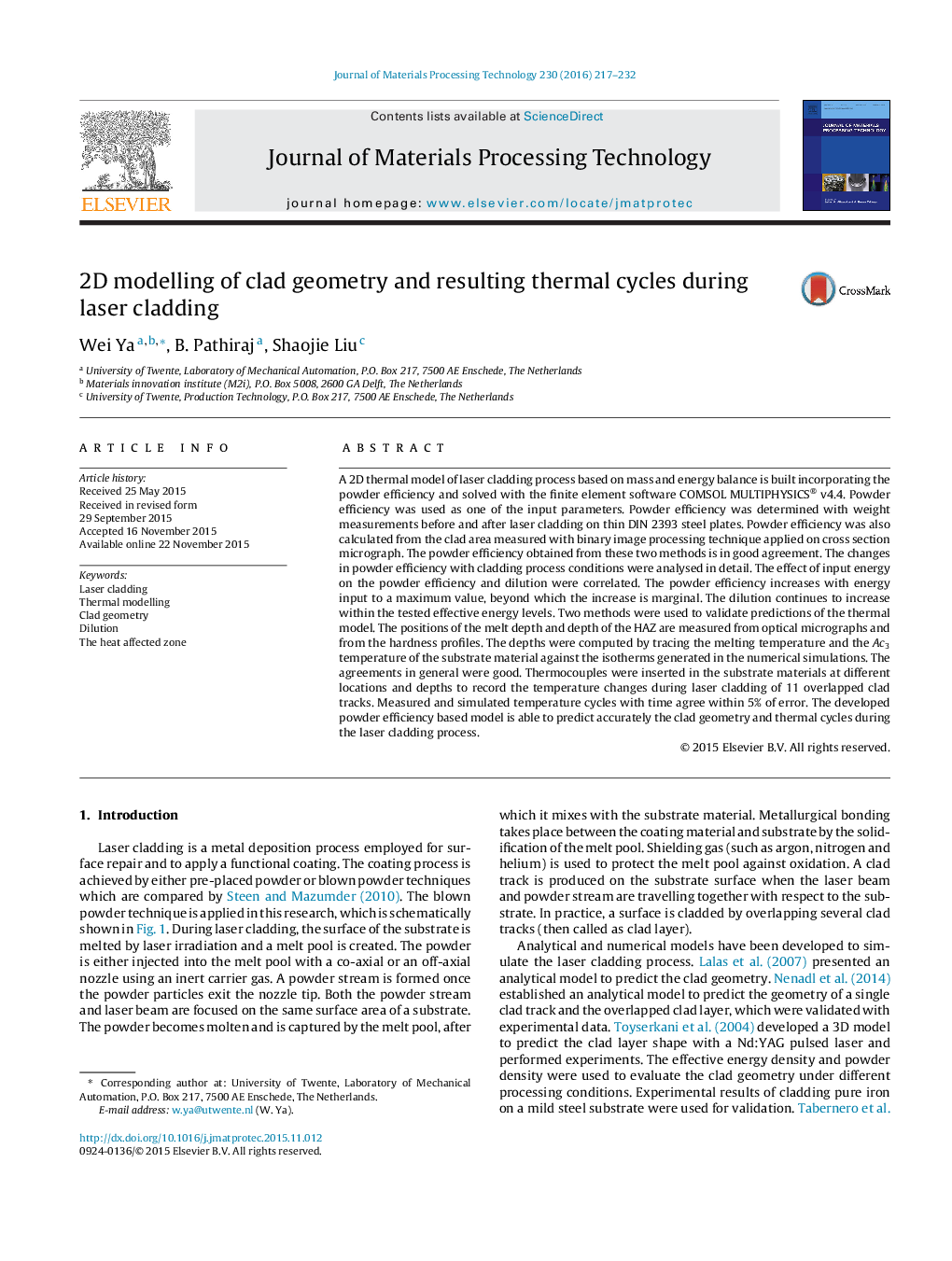| کد مقاله | کد نشریه | سال انتشار | مقاله انگلیسی | نسخه تمام متن |
|---|---|---|---|---|
| 797841 | 1466737 | 2016 | 16 صفحه PDF | دانلود رایگان |

• A 2D thermal model of laser cladding process based on mass and energy balance is built.
• Model predictions of clad geometry, dilution and thermal cycles are experimentally verified.
• Calculated and measured powder efficiency is used as one of the model input parameter.
A 2D thermal model of laser cladding process based on mass and energy balance is built incorporating the powder efficiency and solved with the finite element software COMSOL MULTIPHYSICS® v4.4. Powder efficiency was used as one of the input parameters. Powder efficiency was determined with weight measurements before and after laser cladding on thin DIN 2393 steel plates. Powder efficiency was also calculated from the clad area measured with binary image processing technique applied on cross section micrograph. The powder efficiency obtained from these two methods is in good agreement. The changes in powder efficiency with cladding process conditions were analysed in detail. The effect of input energy on the powder efficiency and dilution were correlated. The powder efficiency increases with energy input to a maximum value, beyond which the increase is marginal. The dilution continues to increase within the tested effective energy levels. Two methods were used to validate predictions of the thermal model. The positions of the melt depth and depth of the HAZ are measured from optical micrographs and from the hardness profiles. The depths were computed by tracing the melting temperature and the Ac3 temperature of the substrate material against the isotherms generated in the numerical simulations. The agreements in general were good. Thermocouples were inserted in the substrate materials at different locations and depths to record the temperature changes during laser cladding of 11 overlapped clad tracks. Measured and simulated temperature cycles with time agree within 5% of error. The developed powder efficiency based model is able to predict accurately the clad geometry and thermal cycles during the laser cladding process.
Journal: Journal of Materials Processing Technology - Volume 230, April 2016, Pages 217–232